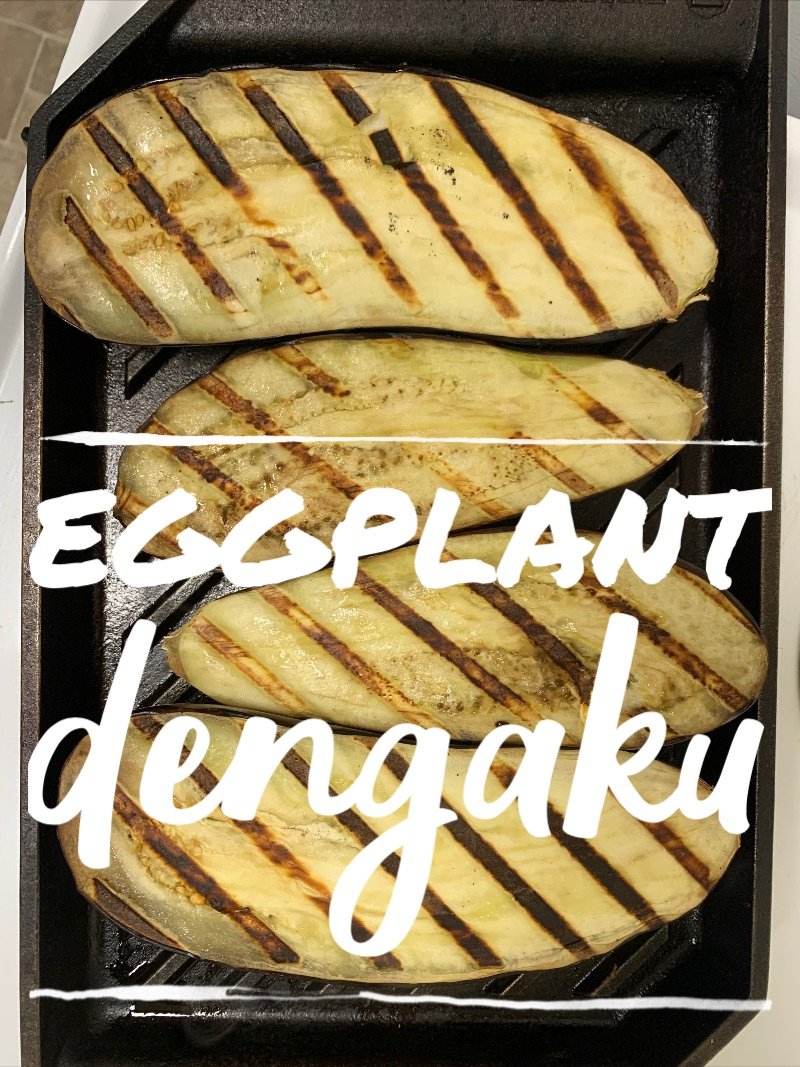Eggplant Dengaku
If you’re anything like me, all this cold, rainy weather has you craving all your favorite comfort foods. Unless you’ve been to Japan or grew up around traditional Japanese cooking, this dish probably isn’t on your short list of fall classics. But if you like eggplant, it should be! It is tender, creamy, and rich, with the just the right balance of savory, umami and sticky sweet. The key to this dish is patience: while it is pretty simple, it does take a bit of time from start to finish, and there’s really no way to rush it. Many people don’t like eggplant because of its spongy or soggy texture - both signs of an undercooked eggplant! If you give it enough time to cook all the way through, you will be rewarded with a custard-like texture that can be spooned from the peel like roasted bone marrow!
Ingredients:
1 eggplant
1/2 cup miso paste
1/2 cup honey
1 Tbsp mirin
1/4 cup olive oil
Salt
Sesame seeds (optional)
1. Three hours before cooking, cut the eggplant in half lengthwise and salt the cut sides liberally. Let it rest, cut-side-up, at room temperature. This step helps reduce bitterness and increase tenderness.
2. To make the dengaku glaze, mix the miso paste and mirin together, then add in the honey and mix until smooth. (This sauce keeps for a long time in the fridge and can be used to glaze anything from fish, to ribs, to sweet potatoes!)
3. When you’re ready to cook, heat your oven or grill to 400F. If you’re grilling or you have a grill pan (as pictured) make sure the grates get nice and hot.
4. Blot the eggplant halves to remove excess salt and any moisture that has accumulated on top. Coat on all sides with the olive oil. If you are grilling, place the eggplant cut side down directly on the hot grates. If using a normal baking sheet in the oven, leave the eggplant cut side up. Cook for 10 minutes like this. Don’t adjust eggplant once it’s cooking, it may stick to the grates and tear.
5. Remove from the oven or grill. Using a spatula to release the eggplant from the grates usually works better than grabbing it with tongs. The cut side should be slightly dried out, creating a nice place to carefully spread some dengaku sauce with a grill brush or large spoon. Don’t try to get it perfect or you will end up smearing the sauce right off the hot eggplant. It will melt and even out as it cooks. Return to the oven or grill, cut side up, and allow to cook for 15 minutes. Add a second layer of sauce and cool for 15 more minutes. At this point the eggplant should be getting close, but err on the side of over done! When it’s done, it should have a glassy, almost translucent appearance, the dengaku glaze should be deeply caramelized, and you should be able to easily insert a spoon near the stem end.
6. Remove from the oven and let rest 15 minutes before eating. This ensures even cooking and prevents third degree burns from the molten goodness! To eat, use a spoon to scoop it away from skin (as pictured) and have it with rice and grilled fish, as a side dish to your favorite curry, or spread over garlic toast with pickled Fry Family Farm peppers :)
Alex Dakers
Chef / Owner, Yabai Nikkei

